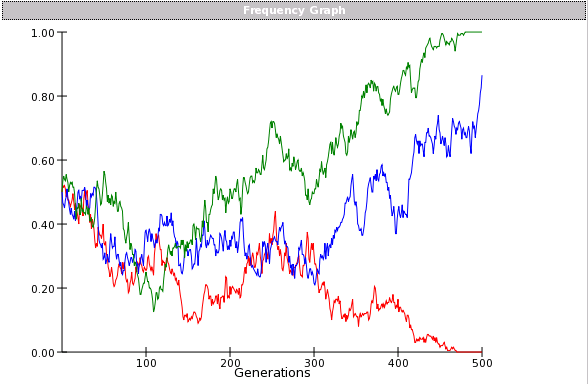Random genetic drift is the phenomenon of changing allele frequencies over time due to random sampling effects. As you have seen with our virtual mosquito lab, this means that the frequencies of the two alleles kdr_wt and kdr_mut varies from one generation to the next during a period of 10 generations. What effect would this have over hundreds of generations?
To answer this we used the virtual mosquito lab to simulate three different medium-sized mosquito populations of 500 individuals each ("green", "blue" and "red"). The graph in Figure 1 below shows you what happens to the frequency of kdr_mut (plotted on the y-axis) after 500 generations.

As you can see after about 480 generations all of the "green" mosquitoes carry the kdr_mut allele. This point, where the frequency of an allele equals 1.0 is called "fixation". This also implies that the other allele kdr_wt has completely disappeared and no longer exists in the "green" population. The exact opposite is happening with the "red" population, where kdr_mut goes extinct - its allele frequency decreases until it equals zero - and all of mosquitoes become homozygous for kdr_wt. When an allele reaches a frequency of 1 in a population, we say that it has reached fixation.
The alleles in the "blue" population were drifting throughout the experiment, but if we wait long enough fixation will take place. In fact for any gene in a population that is subject to genetic drift, one allele will sooner or later become fixed, whereas all others will disappear.
